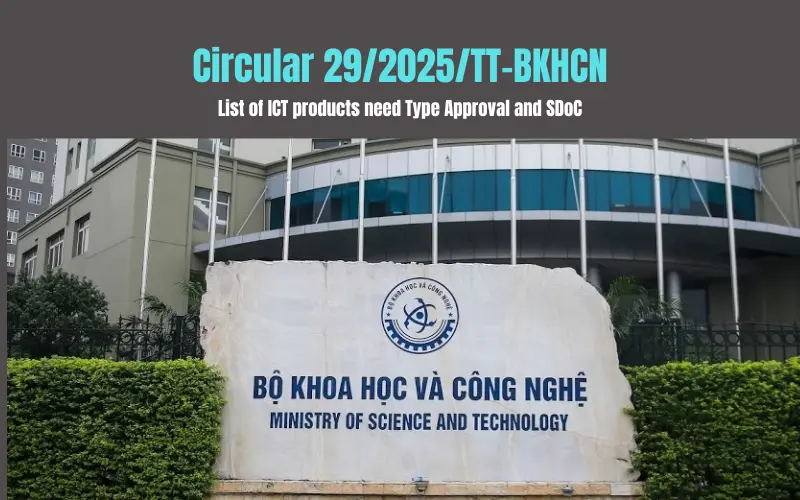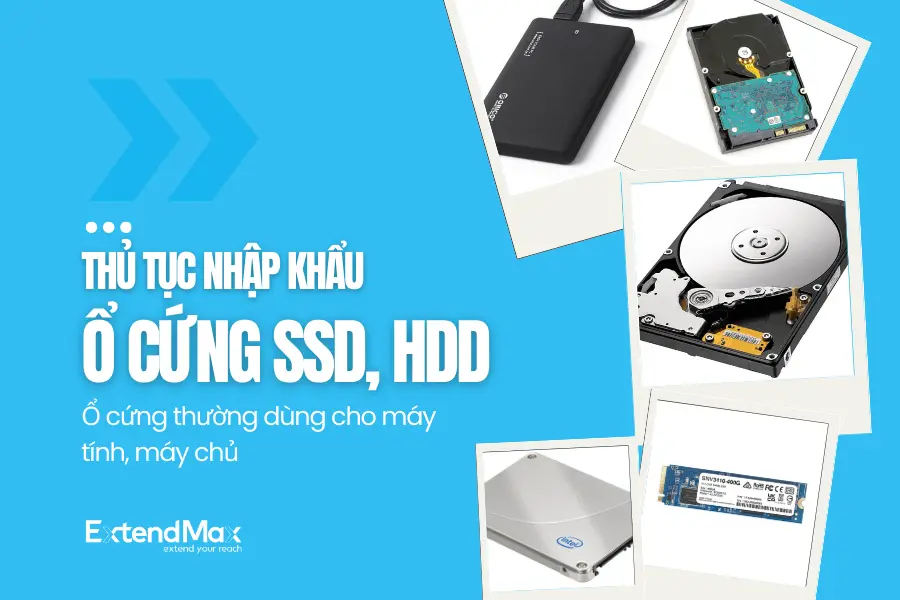EXTENDMAX – Datasheet is a widely used document in the field of electronics engineering and information technology, providing information about products, services, or software for users or researchers. It also serves as a crucial reference for buyers to determine if a product meets their needs or for regulatory authorities to evaluate if the product complies with local regulations. Amid increasingly complex import and export procedures involving numerous specialized inspection policies, professional expertise is required to navigate the processes effectively and minimize risks related to conformity certification costs, licensing fees, and clearance timelines. A key element in determining specialized inspection policies is the product's datasheet (technical data sheet). In this article, ExtendMax will explain the essence of a datasheet, its applications, and, most importantly, how to interpret a datasheet to understand the nature of a product and its relevance across various fields. ExtendMax’s guide will be particularly helpful in determining HS codes, assessing quality inspection policies, and obtaining import-export licenses. Through this, we aim to support you in achieving a higher level of professional expertise in your field.
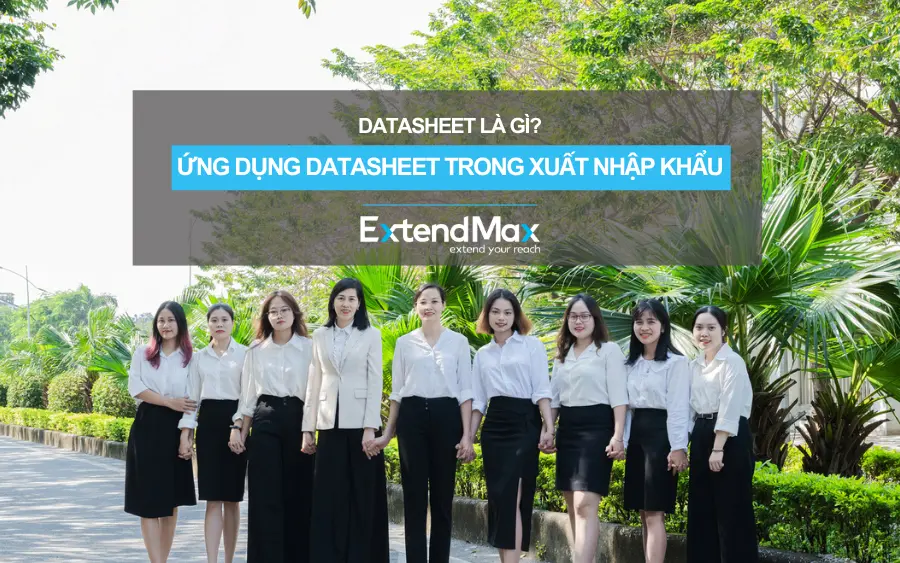
What is a Datasheet?
A datasheet, also known as a technical specification sheet, is a critical document providing detailed information about a product, including its technical characteristics, key features, and fundamental specifications. A datasheet can exist as either a physical document or an electronic file. It serves as an official resource that helps consumers or clients better understand the properties, capabilities, and limitations of a product before making a purchase decision, ensuring safe and effective use. Additionally, datasheets play a vital role in activities such as product design and development, testing, and system research.
In the context of import-export logistics, a datasheet is one of the most essential references for determining the HS code, evaluating applicable quality inspection policies, and identifying licensing requirements.
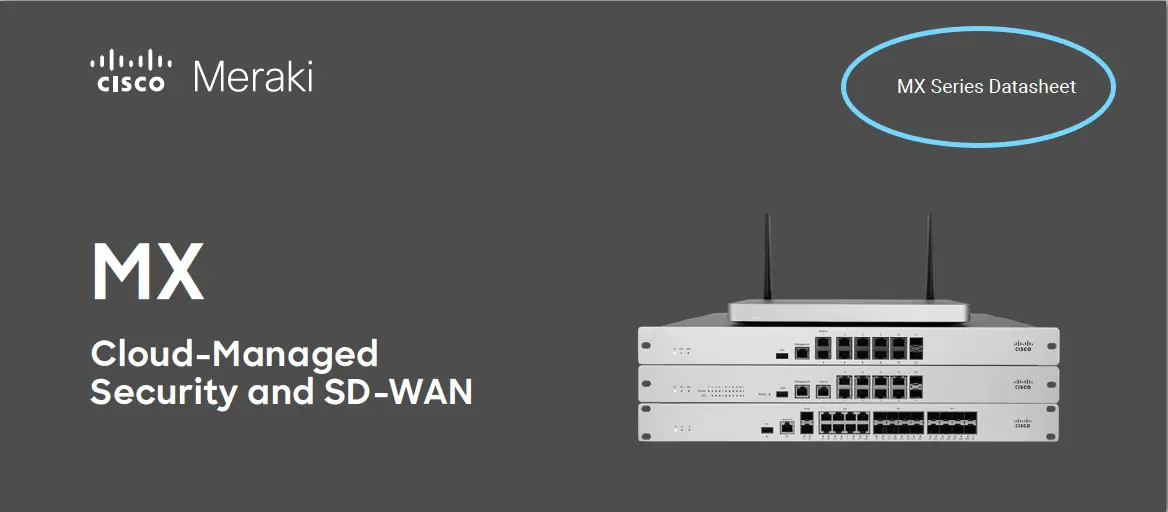
cover of a datasheet
Who issues a datasheet?
Datasheets are typically issued by the manufacturer to serve various purposes, such as providing technical specifications of a product to users, describing and promoting its features, or supporting applications for certifications or import-export licenses on behalf of the manufacturer.
In some cases, distributors or product suppliers may also issue datasheets to provide information to buyers. However, these datasheets are often designed for marketing purposes and hold less legal significance compared to those issued by the manufacturer.
Common information found in a datasheet
Depending on the type of product, a datasheet can include various types of information. Typically, a datasheet will provide the following details:
- Product name and brand name.
- Main functions and applications of the product.
- Product identification codes (Model Name, Part Number, Model Number).
- Images depicting the product's basic structure.
- Detailed product information, including specifications and technical characteristics.
- Persuasive reasons to encourage customers to purchase the product.
- Name and address of the manufacturer or the company responsible for the product's quality.

Specifications are a key component of a datasheet.
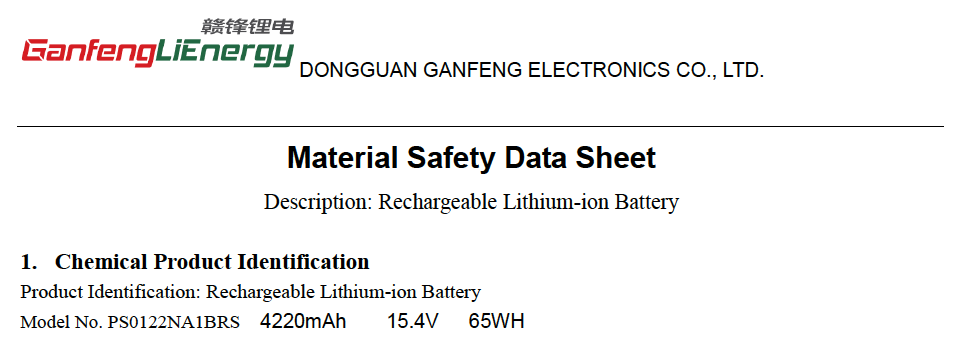
In certain cases, the following types of documents serve similar purposes to a datasheet and can be considered different classifications of datasheets, often used as substitutes:
-
Catalogue (or Catalog in American English): A catalogue is a document that describes the characteristics, features, and applications of a product in a general manner. It primarily aims to persuade customers and often lacks detailed technical descriptions. However, catalogues usually include a section for technical specifications. In many cases, catalogues can be used in place of datasheets.
-
Specification Sheet (Spec Sheet): A spec sheet is a document that provides in-depth descriptions of a product's technical specifications, commonly used in engineering and technology fields. It is more focused on technical aspects, offering minimal descriptions of features and lacking promotional content to persuade buyers.
-
Approval Sheet: This type of datasheet is used during the product testing and development process. Approval sheets are strictly for internal use within the manufacturing company, serving the purpose of managing the R&D process. They are not intended for end-users or buyers.
Documents often mistaken for datasheets but cannot replace them:
- User manual is a document designed to provide detailed information and instructions on how to use a product or service. It helps users understand how the product works, how to install, operate, maintain, and troubleshoot basic issues. While a user manual may include descriptions of technical specifications, they are usually very brief.
- Installation guide is a document or resource that provides detailed steps for installing, setting up, or configuring a product, device, or software. This document helps users or technicians perform the installation process correctly and safely. Typically, installation guides do not contain information about the product’s features or technical specifications.
Uses of a datasheet for buyers
- Provides technical specifications to help the purchasing department easily compare and select products that meet specific requirements.
- Serves as a reference document for making purchasing decisions or preparing cost estimates for technical projects.
- Datasheets are often included in bidding documents to describe the details of the offered product.
Uses of a datasheet in engineering
- Assists design engineers in integrating a product into a specific system.
- Provides detailed performance data under specific operating conditions, helping users evaluate whether the product meets their needs.
- Offers detailed information such as connection diagrams, environmental characteristics (temperature, humidity), and power requirements.
- Ensures the product complies with technical, quality, or industry regulations by using the datasheet to verify certifications like CE, RoHS, or FCC if listed.
The use of datasheets in import and export
How to use datasheets to determine HS codes
As analyzed above, a datasheet includes the product name, main functions, technical specifications, materials, and more. This information allows you to apply the six rules of goods classification to determine the HS code of a product. Alternatively, you can follow this simple 4-step method for HS code identification:
Step 1- Refer to the datasheet to gather product details: Examine the datasheet to identify the product’s name, specifications, features, and materials.
Step 2 - Use datasheet details to narrow down the chapter, heading, and subheading: Based on the information in the datasheet, identify the appropriate chapter, heading, and subheading for the product. You can search keywords related to the product in the HS Tariff Schedule to list all possible HS codes containing those keywords.
Step 3 - Compare the options with the product’s characteristics. Review the detailed descriptions of the potential HS codes and compare them with the product’s criteria, including structure, materials, and applications, as described in the datasheet.
Step 4 - Select the most appropriate HS code. Choose the HS code that best matches the product's characteristics.
Example: Identifying the HS code for an industrial tablet
Suppose the datasheet for an industrial tablet states the following:
- Product name: industrial tablet
- Screen: 17-inch LCD
- Features: virtual keyboard, Intel Core i7 CPU, 8GB RAM, 512GB SSD, dedicated graphics card
- Weight: 10.5 kg
Step-by-step process:
- Search: Access the HS Tariff Schedule at www.customs.gov.vn and find the heading 8471 - "Automatic data processing machines and their functional units".
- Compare: Within heading 8471, locate subheading 8471.30 - "Portable automatic data processing machines weighing not more than 10kg".
- Verify: While subheading 8471.30.90 is commonly used for tablets, it is unsuitable here because the product weighs more than 10 kg.
- Select: A more appropriate HS code for this industrial tablet would be 8471.41.90 - "Containing at least one central processing unit, one input unit, and one output unit, whether or not combined in the same housing - Other".
This example demonstrates the importance of using a datasheet for accurate HS code determination. Relying solely on general advice (e.g., asking someone for the HS code of a tablet) might lead to errors. In this case, the datasheet helped identify the correct HS code, avoiding potential compliance issues.
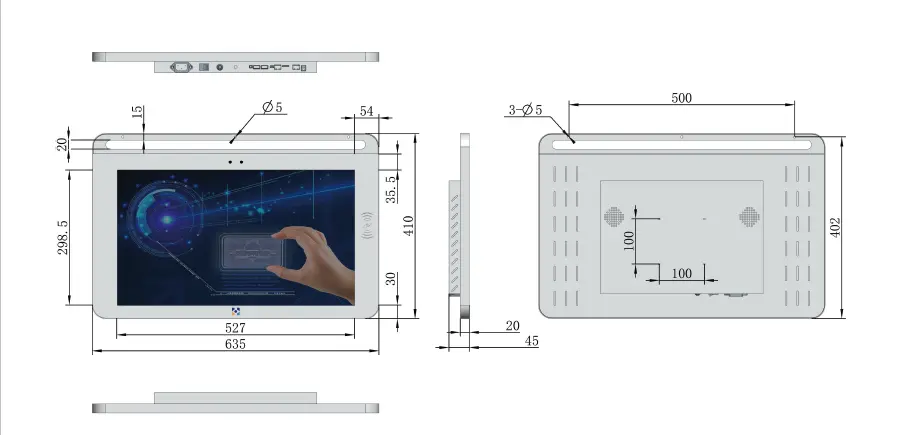
How to use datasheets to determine quality inspection policies
Typically, HS codes are used to reference tariff schedules and specialized inspection policies to determine the quality inspection requirements for imported products. However, for certain products that can be subject to multiple technical standards due to integrated features (e.g., the Group 2 Goods List issued by the Ministry of Information and Communications), relying solely on HS codes may not yield accurate results. Instead, you need to base your assessment on the technical characteristics outlined in the datasheet to identify the mandatory applicable standards. Additionally, the datasheet can be used to determine cases where products are exempt and to explain exclusions to customs officials when doubts arise.
Example:
Below is an excerpt of the technical specifications related to wireless transmission in the datasheet for a Dell desktop computer:
Wireless Specifications:
-
- Wi-Fi Standard: IEEE 802.11a/b/g/n/ac/ax
- Frequency Bands: 2.4 GHz and 5 GHz
- The product has optional WiFi 6E (with certain module)
Using this information, you can determine whether the product is subject to technical regulations for wireless devices, such as compliance with Circulars or Decrees related to wireless communications issued by the Ministry of Information and Communications. Additionally, this helps identify specific technical standards, such as compatibility with RF regulations or radio frequency spectrum use policies.
By carefully analyzing datasheets, you can ensure accurate identification of applicable regulations, reduce the risk of non-compliance, and streamline certification or customs processes.

The datasheet describes the technical specifications of transmission and reception functions.
Based on technical specifications, you can determine applicable standards and regulations as follows:
| Technical regulation applicable for Desktop PC | Technical regulation applicable for integrated wireless functions | Additional regulations for WiFi 6E |
| QCVN 118:2018/BTTTT | QCVN 54:2020/BTTTT QCVN 65:2021/BTTTT QCVN 112:2017/BTTTT | DELL must issue a declaration stating that WiFi 6E is disabled in Vietnam. |
>>> Read more: Product Quality Inspection for ICT devices
>>> Read more: ICT Type Approval guide and tips
How to use datasheets to determine cases of exemption
Specialized inspection policies are typically limited to specific scopes of applicable standards or technical regulations. This is especially common for electronic, telecommunications, and IT products. By using the information provided in the datasheet and comparing it with the scope outlined in specialized inspection policies, you can identify whether a product is subject to mandatory compliance or qualifies for an exemption.
Example:
Suppose the datasheet specifies that the product is a True Wireless Bluetooth headset (Bluetooth technology operating at a frequency of 2.4 GHz). If you merely rely on the HS code of the headset and compare it with Circular 02/2024/TT-BTTTT, you might conclude that the product is subject to quality inspection by the Ministry of Information and Communications. However, the fact is that this product is exempt from quality inspection, as its operating frequency of 2.4 GHz is not within the scope of Section 2.10 of Circular 02/2024/TT-BTTTT.
Excerpt from Section 2.10, Appendix 1 of Circular 02/2024/TT-BTTTT
| No | Name of products and goods | Technical regulations | HS code according to the Circular 31/2022/TT-BTC | Description of products and goods |
| 2.10 | Wireless audio devices | QCVN 91:2015/BTTTT | 8518.30.10 8518.30.20 | Wireless headsets with operating frequency ranges of 40.66 - 40.7 MHz; 87 - 108 MHz; 182.025 - 182.975 MHz; 217.025 - 217.975 MHz; 218.025 - 218.475 MHz; 470 - 694 MHz; and 1795 - 1800 MHz. |
You can also apply the above method to all electrical and electronic devices listed under the Group 2 Goods List by the Ministry of Science and Technology or the list of goods subject to energy efficiency testing. This helps determine quality inspection policies or identify cases exempt from quality inspection.
How to interpret a datasheet to identify civil cryptographic products
A datasheet provides detailed product information, enabling you to determine whether a product requires a civil cryptography license. Below is a step-by-step guide to using a datasheet for this purpose:
Step 1: Search for encryption algorithm information
- Objective: Identify whether the product uses encryption algorithms and, if so, which ones.
- How to do it: Look for keywords such as "encryption," "cryptography," "cipher," "security," "IPsec," or "hashing algorithms" (e.g., MD5, SHA-1, SHA-256) in the datasheet. You can also search for specific algorithm names like AES, RSA, DES, or 3DES.
- Result: If the datasheet mentions any encryption algorithm, the product may fall under state management for civil cryptography.
Step 2: Examine security functions and protocols
- Objective: Understand the product’s security functions, operations, and protocols.
- How to do it: Carefully review the sections describing the product's security features. Check whether the product generates, stores, or manages encryption keys and if it supports security protocols like VPN.
- Result: If the product incorporates encryption-based security functions and meets the criteria in the civil cryptography product list (as defined in Decree 58/2016/ND-CP and Decree 32/2023/ND-CP), it may require a license.
Step 3: Compare with the civil cryptographic product list
- Objective: Determine whether the product is included in the civil cryptography product list.
- How to do it: Compare the information from the datasheet with the civil cryptography product lists defined in Appendix 1 of Decree 58/2016/ND-CP and Decree 32/2023/ND-CP. Pay attention to detailed descriptions of product types, functions, and encryption algorithms used.
- Result: If the product matches any item in the list, it must comply with the corresponding civil cryptography licensing policies.
Example:
Suppose a datasheet for a router specifies the following:
- Encryption algorithms: AES-256, RSA, SHA-256
- Security features: Supports VPN, IPsec protocols, and stores encryption keys
- Functionality: Provides secure data transmission over networks
Analysis: Based on the above, the router likely falls under the civil cryptographic product category and requires a license, as it meets the criteria outlined in the decrees. Always ensure compliance by cross-referencing the specific product details with the legal regulations.

The datasheet of a civil cryptographic product.
Important Notice:
Using a datasheet to identify civil cryptographic products requires expertise in information technology, an in-depth understanding of the product's operational model and encryption methods, and the ability to cross-reference with exemption cases specified in Decree 58/2016/ND-CP. If you lack this specialized knowledge, you can seek support from ExtendMax's civil cryptography experts.
>>> Read more: How to obtain Civil Cryptographic Items trading license
Using datasheets to determine energy efficiency policies
Decision 14/2023/QĐ-TTg specifies the types of products required to meet minimum energy efficiency standards. However, does this mean that all products listed in Decision 14/2023/QĐ-TTg must comply with minimum energy efficiency requirements? You can find the answer yourself with the following example of how to use a datasheet for this purpose:
Suppose you are importing a washing machine with a washing capacity of 18 kg as stated in its datasheet. According to Decision 14/2023/QĐ-TTg, the applicable energy efficiency standard for washing machines is TCVN 8526:2013. Next, check the scope of application of TCVN 8526, as detailed below, and compare it with the washing machine’s specifications in the datasheet. Through this, you can determine that the washing machine with an 18 kg capacity does not require energy efficiency testing.
Scope of application of TCVN 8526:
“This standard specifies energy efficiency levels and methods for determining energy efficiency for household washing machines and similar purposes, with or without heating devices, using cold and/or hot water, and with a rated capacity from 2 kg to 15 kg.”
You can use this method to explain to customs officials during clearance procedures or clarify to customers in case of questions.
>>> Read more: List of product under VNEEP program
>>> Read more: What is new with ExtendMax EE DoC services
Knowledge and experience are meant to be shared. We would be delighted to receive your support by leaving comments and reviews below the article and sharing it with your friends or colleagues in the import and logistics industry. Follow ExtendMax on our Facebook fanpage or LinkedIn to stay updated with the latest information.
↓ ↓ ↓ ↓ ↓ ↓ ↓



